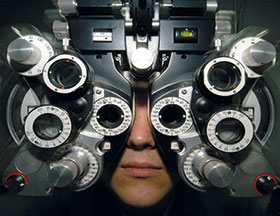

Hospitals need to secure not just their patients, but their staff, their high value assets and sensitive areas like pharmacies. It requires an integrated approach. With economic pressures and changes in regulations, healthcare environments have to continually adapt. Selecting solutions with innovative features that are able to adapt to changing and evolving environments, and scale as needed is vital.

Key solutions may include access control, CCTV monitoring and intrusion prevention. However, there are also niche solutions that are critical within hospitals.
Integrated solutions add considerable value, enabling coordinated responses and interactions that may be critical to ensure a safe environment for staff, visitors and patients and comply with various regulations. To ensure flexibility and integration, these solutions should ideally be able to work in IP and legacy environments, scale as needed and facilitate integration of third-party systems. Compatibility with industry standard protocols is key.
There are key areas where hospitals need specialised solutions.
Keeping baby safe
Mismanagement of baby safety is something nobody wants. New solutions are being put to work to ensure the identification and tracking of every infant from the time of delivery. This prevents both baby abductions and unintentional baby mismatching in maternity and neonatal departments.
How does it work? At the time of birth, a tamper-proof Active Radio Frequency Identification (RFID) Charm is placed on the baby’s ankle. This provides real-time, bassinet level, location awareness of the protected infants. Should there be an attempt to remove the protected infant from the secured area without approval or authorised escort, the RFID charm will trigger an alert to advise personnel of the evolving security incident.
Patient flow solution
A similar RFID solution for patients gives hospitals the ability to monitor and analyse how patients are moving through the different stages of care delivery by automatically monitoring their movements and interactions with medical staff and assets. The solution frees staff from the time-consuming task of manual record keeping. The result can be improved patient care, satisfaction, and an increase in hospital revenue without the need for new building programmes, supplemental capital investments or additional workforce expansions.
Staff duress call
In emergency rooms and elsewhere in hospitals, emotions run high. Anxious family members and friends can put staff into difficult and even dangerous situations. And being in physical danger or being faced with a threatening situation is not always confined to emergency rooms. Since hospital staff are in the front line, they need to be protected. More hospitals are making sure they use solutions that enable a staff duress call that will bring immediate assistance.
These solutions come in the form of active RFID badges that have wireless call functionality. Staff simply press their badge’s call-button to discreetly summon help via the receiver network. Responders are informed of the identity of the staff member needing help and the precise sub-room location of the emergency situation.
Keeping temperatures even
Environmental conditions within hospitals often need to be monitored carefully, within wards to ensure the wellbeing of patients, as well as in areas where temperature-sensitive medicines may be stored or expensive assets need to be handled and stored according to specific compliance guidelines. Multiple solutions assist hospitals to monitor and log conditions. However, they also need solutions that are cost-effective, automated, and able to enhance staff efficiency and productivity.
Solutions such as RFID sensors mounted in refrigerators, freezers or in building environments such as IT closets can transmit around-the-clock temperature readings. Should the temperature deviate from the mandated temperature range, personnel will be alerted to investigate and correct the non-compliant temperature condition. These sensors can be used in a network to monitor hundreds of items and environments, providing hospitals with the alerts, reports and audits required to ensure safety and compliance.
Keeping wandering patients’ safe
Wandering resident and patient protection solutions are useful for ambulatory individuals suffering from Alzheimer’s disease and dementia. Solutions such as pre-configured door monitoring and protection kits reduce the need to continuously supervise chronic wanderers or to excessively restrict their mobile independence.
Each patient is given a wrist tag which allows the individual free and unregulated movement within the interior of the building or residence. It permits regular movement of care givers, guests, other residents or family members through a protected doorway while preventing unsupervised wanderers from exiting through the door. However, should the wanderer approach the protected door through which he or she is not allowed to pass unescorted, the solution alert intervention functionality will auto trigger.
Alternatively, the solution may be used as a solution to automate the unlocking of doors if hands free access is needed by residents restricted to wheelchairs.
Keeping assets in place
By tagging assets and pairing them with a comprehensive asset management solution, hospitals can make more effective use of their physical assets.
These solutions provide online asset searching, real-time inventory and comprehensive asset security, including notifications of deliberate or accidental tampering. They will allow for rapid location and status check of assets, also raising alerts when assets are in need of preventative maintenance or servicing. By knowing what assets they have and where they are, hospitals can manage physical resources more efficiently. Staff members are less likely to stockpile equipment when assured that tools will be accessible as needed; and these solutions significantly reduce the time wasted searching for equipment, increased employee productivity.
Select solutions with care
For hospitals, finding the right solution is essential. It needs to not only deliver the needed functionality cost effectively, but be able to drive efficiencies, taking pressure off staff to focus on their core responsibilities. Integrated solutions with innovative functionality built to adapt to changing conditions will assist them to do just that. With more and new technology driving smart management and security, it’s important that healthcare facilities explore solutions that facilitate their journey into an increasingly digital future, allowing them to maximise current investments.
For more information contact Johnson Controls, +27 (0)11 921 7141, [email protected], www.johnsoncontrols.com
© Technews Publishing (Pty) Ltd. | All Rights Reserved.